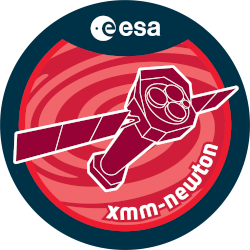

| Proposal ID | 050605 |
| Title | Turn-off of nuclear burning and recovery of accretion in recent galactic novae |
| Download Data Associated to the proposal | https://nxsa.esac.esa.int/nxsa-sl/servlet/data-action-aio?obsno=0506050101 |
| DOI | https://doi.org/10.5270/esa-go54fx8 |
| Principal Investigator, PI | Dr Margarita Hernanz |
| Abstract | Detection of X-rays from classical novae in their post-outburst stages providesunique and crucial information about the explosion mechanism and thereestablishment of accretion. Soft X-rays reveal if a hot nuclear burning shellremains, whereas harder X-rays give diagnostics about the recovery of accretionand the magnetic or non magnetic character of the reborn cataclysmic variable.The unprecedented sensitivity of XMM-Newton will permit to deduce crucialparameters of the nova evolution: mass of the white dwarf, turnoff timescale,mass burned to helium, if burning is still on, and properties of the ejectaand/or the recovered accretion stream. We propose to observe 3 novae thatexploded in 2006, to increase the still scarce data on recent novae. |
| Publications |
|
| Instrument | EMOS1, EMOS2, EPN, OM, RGS1, RGS2 |
| Temporal Coverage | 2007-05-05T11:36:57Z/2007-10-03T04:03:08Z |
| Version | 17.56_20190403_1200 |
| Mission Description | The European Space Agencys (ESA) X-ray Multi-Mirror Mission (XMM-Newton) was launched by an Ariane 504 on December 10th 1999. XMM-Newton is ESAs second cornerstone of the Horizon 2000 Science Programme. It carries 3 high throughput X-ray telescopes with an unprecedented effective area, and an optical monitor, the first flown on a X-ray observatory. The large collecting area and ability to make long uninterrupted exposures provide highly sensitive observations. Since Earths atmosphere blocks out all X-rays, only a telescope in space can detect and study celestial X-ray sources. The XMM-Newton mission is helping scientists to solve a number of cosmic mysteries, ranging from the enigmatic black holes to the origins of the Universe itself. Observing time on XMM-Newton is being made available to the scientific community, applying for observational periods on a competitive basis. |
| Creator Contact | https://www.cosmos.esa.int/web/xmm-newton/xmm-newton-helpdesk |
| Date Published | 2008-11-14T00:00:00Z |
| Last Update | 2025-08-04 |
| Keywords | "XMM", "recovered accretion stream", "XMM-Newton", "mass burned", "nuclear burning", "nova evolution", "reborn cataclysmic variable", "galactic novae", "post outburst stages", "xmm newton", "turnoff timescale", "soft xray", "harder xray", "magnetic character", "explosion mechanism", "classical novae", "white dwarf", "scarce data" |
| Publisher And Registrant | European Space Agency |
| Credit Guidelines | European Space Agency, Dr Margarita Hernanz, 2008, 'Turn-off of nuclear burning and recovery of accretion in recent galactic novae', 17.56_20190403_1200, European Space Agency, https://doi.org/10.5270/esa-go54fx8 |